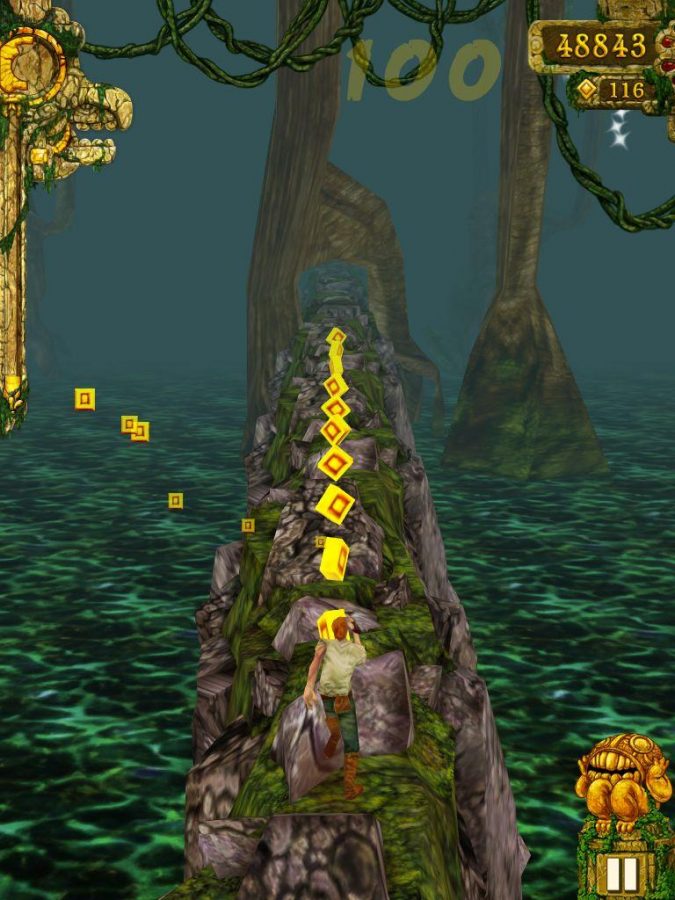
The nerve-racking experience when you jump too early or too late is comparable to nothing else. The envy that overcomes a person who does not own an Apple product is difficult to bear. Simply put: they’re Temple Run problems. Temple Run has been the top iOS game for months with over 20 million downloads. Although it may seem like just another interactive 3D experience created by IMANGI Studios, it has proved to be their most successful game by far. The best part? It’s free.
The anxiety a person has when they’re not part of the “million club” can be compared to a big test one forgot to study for. What makes it so addicting? It is an endless running game based on reaction time. One’s score is dependent on the speed of their decision making and execution. As one begins to grow accumstomed to the gameplay style, their scores tend to increase, bringing about this continuous cycle of addiction.
With gameplay beginning on the wooden platform in a temple/jungle, one’s goals are to collect coins and run away from monkeys. This consists of sliding, jumping, tilting, and turning left and right. The seemingly easy, yet undeniably addictive, nature of Temple Run is the driving force behind its mass appeal. One’s character is trying to make his way out of the temple while avoiding obstacles and collecting coins. These coins are then valid currency at the game store, which allows one to buy upgrades and power ups. Players complete objectives to permanently increase their score multiplier. This encourages players to change their style of play, pushing them to reach goals, rather than just a number. Temple Run also contains a leaderboard, where you can see global high scores, along with your friends high scores; this comepetitive element of Temple Run is one of the major reasons why this App has been so successful.
It would easy for skeptics to call Temple Run seems boring. The plot, in which one is running away from scary monkeys because you stole a precious jewel from their temple, seems preposterous and impractical. People who have yet to experience Temple Run usually think it’s overrated. It’s not. It is so much more fun than one would intitially imagine.
Forgetting to slide, jumping into the water by accident, falling off the edge because you tilted just a little too far: These problems occur. As you ease your score into 1,000,000; it gets harder to focus. The longer you play, the faster the character runs (which makes little sense. Don’t they get tired?). Since Temple Run has been released, gamers have constantly tried harder to improve their score, making your Apple device impossible to put down.
“I used to get in trouble for texting in class; now I only get in trouble for playing temple run and tweeting #TempleRunProblems.” That is only one of the many problems gamers face when getting attached to this game. Posted by @TR_problems with over 75,000 followers, they examine the problems of a Temple Run addict. Most iPhone games don’t get that much attention.
IMANGI Studios is currently working on a way to get Temple Run on the Android Market to increase its popularity. It was nominated for Most Addictive Game in the 2011 Best App Ever Awards. With IMANGI officials updating every week to improve minor issues and fight bug crashes, Temple Run is becoming more popular by the day.
It does not take long for a video game to be called “last year” or even “last month.” Temple Run appears to have the formula to successful avoid this trap; it has the rare characteristic that will keep attracting new gamers, while keeping old ones. With over one million Facebook fans, this game won’t be losing its popularity anytime soon.









